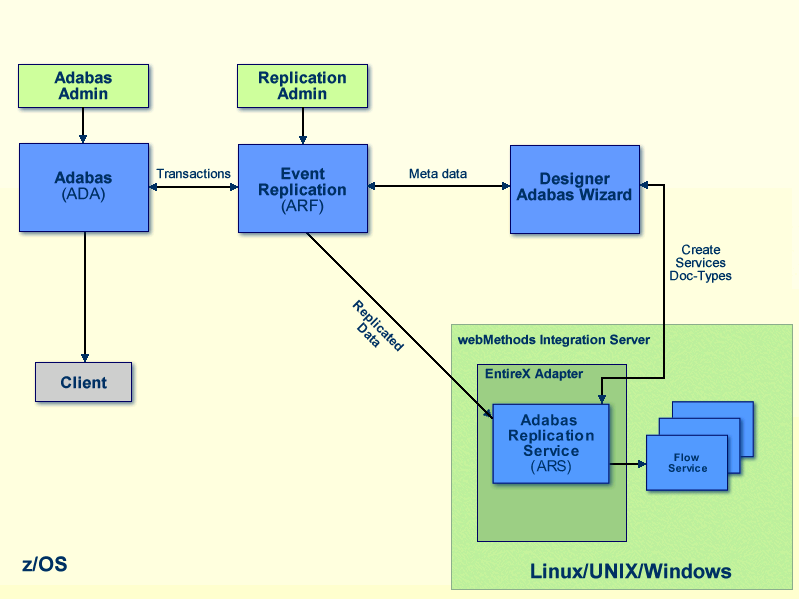The purpose of sending changed data to the webMethods Integration Server is to be able to process data and store it in the final destination. Very often, only a subset of the changed data is required in the target system, or the changes are used as triggers for reading and processing data that is taken from the database - based on the changes that happened.
With this release an optimized data replication from Adabas on mainframe to webMethods Integration Server is available. The solution is called Adabas Replication Service for webMethods Integration Server (ARS) and is based on the EntireX Adapter running in the context of the Integration Server but bypassing the Event Replicator Target Adapter (ART).
The EntireX Adapter receives the changed data and converts it to the iData format used in the Integration Server context. The converted data is available to a service which can be enhanced to process the data to the required needs.
From this point on, the licensed Integration Server functionality is available and can be used to process the data. A new user interface is available to read the metadata from the Event Replicator Server on the mainframe and create document types to be used in the services.

This documentation only describes the Replication functionality for the EntireX Adapter. For details concerning the EntireX Adapter itself, refer to the documentation of this product.
webMethods Integration Server is a run-time server that provides an environment for the orderly, efficient, and secure, execution of services. It supports the integration of diverse services and facilitates communication between systems. Integration Server decodes client requests, identifies the requested services, invokes the services, passes data to them in the expected format, encodes the output produced by the services, and returns output to the clients. Additionally, Integration Server authenticates clients, verifies that they are authorized to execute the requested service, maintains audit-trail logs, and promotes throughput using facilities such as service results caching.